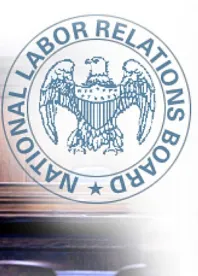The National Labor Relations Board issued a 3-2 decision last month in Pacific Lutheran University, 361 NLRB No. 157, in which it significantly modified the standards for determining: (1) whether college or university faculty members are managerial employees and thus not protected by the National Labor Relations Act; and (2) when the Board should decline to exercise jurisdiction over a college or university that claims to be a religious institution. (Proskauer had submitted an amicus brief in the case in support of various organizations representing colleges and universities on the first issue.) (For a fuller discussion of the Board’s decision, please see Proskauer’s Client Alert.)
On each issue, the majority’s decision seemingly eases the path for unions seeking to represent faculty members at institutions of higher education:
-
First, the majority put a new gloss on the Supreme Court’s seminal decision concerning NLRA coverage of faculty members, NLRB v. Yeshiva University. (Proskauer represented Yeshiva University in that case, which the high court decided in 1980.) The Board will now find that faculty members are managerial employees only where their recommendations are “almost always” followed by administrators. In addition, the majority’s new test identified three “primary” areas of decision making that it will accord the greatest weight, but in doing so combined in one such primary area (“academic programs”) several academic decisions that the Board has traditionally given greater weight in dozens of decisions over several decades, and elevated two other areas of decision making (enrollment management and finances) that have never held such significance. And critically, the majority essentially avoided the D.C. Circuit’s mandate in LeMoyne-Owen College v. NLRB and Point Park University v. NLRB to explain “which facts are significant and which less so, and why.” As dissenting Member Johnson wrote:
[T]he majority has decided to create a comprehensive test here, and, therefore, the actual weighting of its factors, including what showing is sufficient to meet the majority’s test, is a rather large analytical question to be left unresolved, particularly if the hope is to provide predictability and guidance with regard to how the Board will make these determinations in the future.
-
Second, the majority abandoned the “substantial religious character” requirement that it had previously applied in determining whether to assert jurisdiction over religiously-affiliated colleges and universities, but declined to adopt the D.C. Circuit’s three-part test in University of Great Falls v. NLRB that sought to avoid the risk of infringement upon First Amendment rights as addressed in the Supreme Court’s decision in NLRB v. Catholic Bishop of Chicago. Instead, the Board will now require a college or university to show “that it holds out the petitioned-for faculty member’s [sic] as performing a specific role in creating or maintaining the school’s religious educational environment,” a requirement that the dissenting Board members argued does no better in mitigating the constitutional risk created by the Board’s assertion of jurisdiction.
The Pacific Lutheran decision closely followed the Board’s announcement of new rules that will speed up representation elections and, combined with the Board’s decision in Specialty Healthcare, which liberalized the standard for finding a petitioned-for bargaining unit to be appropriate, epitomizes a trend favoring unions in representation proceedings. But given the strongly worded dissenting opinions and the majority’s failure to adequately address the D.C. Circuit’s concerns on either issue, we expect that Pacific Lutheran will not be the final word for the higher education community.




 />i
/>i

